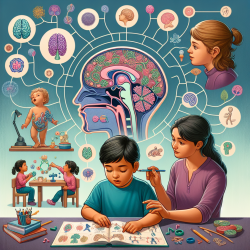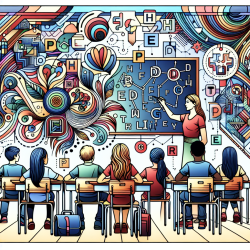Introduction
Understanding the neurobiological underpinnings of learning and behavior in children with myelomeningocele (MM) is crucial for speech-language pathologists and educators. The research article "A Temperament for Learning: The Limbic System and Myelomeningocele" by Vachha and Adams (2004) provides valuable insights into how the limbic system influences cognitive and behavioral outcomes in children with MM. This blog aims to highlight key findings from the study and discuss their implications for practitioners working with this population.
The Limbic System and Its Role in Learning
The limbic system, an ancient part of the brain, plays a critical role in regulating emotions, memory, and learning. It comprises several structures, including the amygdala, hippocampus, and hypothalamus, which are involved in processing emotional responses, memory formation, and cognitive functions. In children with MM, developmental disruptions can affect these structures, leading to unique cognitive and behavioral profiles.
Key Findings from the Research
- Temperament and Learning: The study highlights that children with MM often exhibit unique temperament profiles, such as lower adaptability, higher distractibility, and less persistence on tasks. These characteristics can influence their learning experiences and outcomes.
- Language and Cognitive Skills: Children with MM may have strengths in syntax and lexicon but face challenges in pragmatic communication and higher-order language skills. These language deficits are linked to the limbic system's role in memory and attention.
- Neurobiological Mechanisms: The proximity of limbic structures to the ventricles in children with MM suggests potential neuropathological changes due to hydrocephalus. This can impact memory, attention, and executive functions, critical for academic success.
Implications for Practitioners
For practitioners working with children with MM, understanding the interplay between the limbic system and learning is essential. Here are some strategies to enhance outcomes:
- Individualized Interventions: Tailor interventions to address specific cognitive and language deficits. Focus on enhancing pragmatic skills and executive functions through targeted activities.
- Environmental Modifications: Create supportive learning environments that minimize distractions and accommodate the child's unique temperament. This can improve engagement and learning outcomes.
- Collaborative Approach: Work closely with interdisciplinary teams, including educators, psychologists, and medical professionals, to develop comprehensive support plans for children with MM.
Encouraging Further Research
While the study provides valuable insights, there is still much to learn about the limbic system's role in learning and behavior in children with MM. Practitioners are encouraged to engage in further research and contribute to the growing body of knowledge in this area. Understanding the neurobiological mechanisms underlying cognitive and behavioral differences can lead to more effective interventions and better outcomes for children with MM.
To read the original research paper, please follow this link: A Temperament for Learning: The Limbic System and Myelomeningocele.










